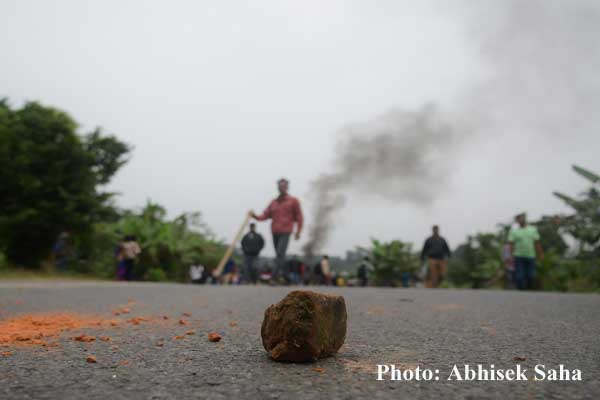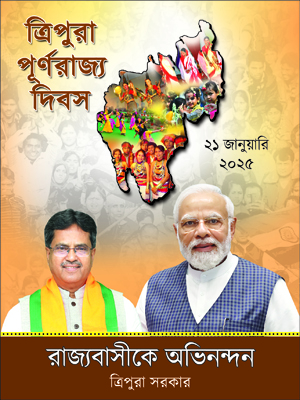Nripen Chakrabarty had committed the same mistake. He also had failed to read the writing on the wall in 1980. This time Biplab Kumar Deb led BJP-IPFT government too either misunderstood the intensity of the anger and frustration of the locals in entire North Tripura district, or just underestimated the potentially dangerous sentiment that was collective and fast accumulating. And after today’s incident- police firing , death of one with several injured- at Panisagar the field was now fertile for further violence, that too with a groundswell effect. And, as the situation turned out to be after today’s incident, resettlement of the Bru refugees as planned by the government in North Tripura district would be well nigh impossible.
The sudden decision of resettlement of the Bru refugees—the ethnic strangers- might have been a political compulsion for the government but to rehabilitate them in the areas where the refugees had earlier failed to prove themselves as good neighbours –often acting as aggressive neighbours- was foolhardy and a blunder with serious implications. According to the locals almost 750 families belonging to both Bengalis and Mizos were displaced from their original villages due to the protracted onslaught committed on them at varied degrees by the Bru refugees living in their vicinity—they had not been properly and adequately rehabilitated as yet. There were on previous occasions also skirmishes between them.
It was thus quite expected that the locals- both Bengalis and Mizos would not accept the idea of living with what they believe a thorn in the shoes—that too with too many. Their agitations –with unmistakable ethnic overtures-were going on for the last couple of months and their arguments that revolved around demographic change, land, environment, employment and resource limitations should have been taken by the government seriously. But the government remained intransigent on its stand and sought to go ahead with the rehabilitation of the Brus in the areas where the atmosphere was already tense. Ignored by the government the agitation then was rapidly snowballing into other areas from its original place –Kanchanpur.
Only on Friday, the tea workers of Heeracherra demonstrated before the ADC Bhavan and expressed their fear that with the resettlement plan in their locality the Brus would eventually outnumber them. They said, they had been living in the areas for the last 150 years or more but till today they did not get their own land and basic amenities. Now they apprehend that with the government supported rehabilitation they would be driven out of their areas. The fear should not be seen as misplaced.
So far, however, at least till Friday situation was outwardly peaceful. The agitations were peaceful. Nevertheless, beneath the peaceful demonstrations due to the government’s indifference, apathy and adamancy, frustration among the locals as expected crept in. And then steadily the frustration turned into anger and determination. With the unprecedented and unseen-before ferocity that was witnessed in Panisagar today, the cold rigidity of the locals to thwart Bru resettlement in their areas could very well be gauged.
Now, the Panisagar incident as a trigger for stimulus-response would clearly and categorically define what the students of ethnic conflicts would term “collective behaviour” or “collective effervescence” in a conflict situation. More participations and more aggressive demonstrations instigated by the Saturday police firing and death of Srikanta Das, would now be on the card. Even if the precipitants do not spark off any immediate violent reactions they, nonetheless, would result in a deadly quiet or lull with a palpable sense of impending ‘hostile outbursts’- which in other words meant – rupture in the apparent piece and bringing forth the underlying ethnic conflict and threats to over-ground with collective behaviours that would be offensively demonstrative.
Hitherto, the confrontations remained confined to in between the agitators–JAM, local groups– and the government. Now with the evocative character of the Panisagar precipitant the fast changing situation would in all likelihood influence the antagonistic mood with a sense of urgency. And this ‘sense of urgency’ was always considered extremely dangerous in an ethnically charged environment because it would now seek to go out of the control of structured agitation form—which was the case under the banner of JAM- and unlock accumulated frustration and anger at individual and group levels sans any specific and effective central leadership. That would then complicate the whole complex further and uncertainty would intensify manifold.
Now, it is the time that government must act cautiously. Prudence is the key. Ethnic and group sentiments no more could be ignored or evaded or swept under the carpet. It had already reached the boiling point with all precipitants for bigger violence in and around.























